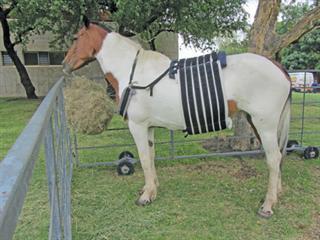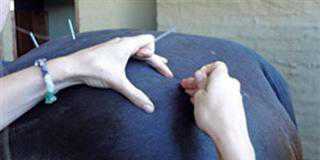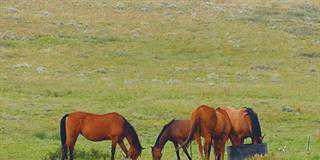
Colic results from pain in the digestive tract. Horses are mono-gastric – like humans they only have a single stomach, with a duodenum and a small intestine. But the large intestine has evolved to digest large quantities of roughage and the caecum (which in humans is the tiny appendix) fills more than half of the abdominal cavity. Colic can be caused by:
- The stretching of the intestine due to excessive fluid, gas or solids (the most common cause.)
- Stretching of the mesentery (fatty membrane attached to the digestive tract), usually due to a twist in the large or small intestine (known as the ‘gut’, in horsey terms).
- Blockage of the blood supply due to a twisted gut.
- Inflammation on the surface of the gut, or over the whole inner surface of the abdominal cavity (peritonitis).
A typical case of colic starts with the horse looking anxiously around at its stomach. Then, suddenly, it’s as if its legs are made of rubber. All four bend at once and the horse starts to go down. It lies on one side for a short time, often with its head up and turned back, looking at its stomach. The next phase is rolling, which may be fairly slow at first. As the pain intensifies, the horse thrashes from side to side.
Straining
Other symptoms seen as colic progresses are profuse sweating, stretching out as though it wants to urinate or raising its tail and straining as though trying to defecate. In severe cases, the gums become pale due to shock or eventually turn a muddy brown as a result of peritonitis and endotoxemia.
About 90% of cases are ‘flatulent colic’ due to too much gas in the stomach or intestine, and respond to conservative treatment.
If, on the other hand, a veterinary examination indicates a blockage or twisted gut, only immediate surgery will save the horse. It is put under general anaesthetic, rolled onto its back on a special table and an incision is made from the breastbone to just before the pelvis.
The intestines are removed and inspected and the cause of colic fixed. The operation can take from two to six hours. The most common post-operative complication is the development of a hernia. Owners also need to nurse a recovered horse, following all the instructions of the attending vet, for up to six months, before the horse can get back to work.
Insurance
Many insurance companies now insist on surgery and won’t pay out if you decide to rather have the horse put down. Fortunately, there’s a special cover (about R1 000/year) for colic surgery. This is a good idea, as surgery can cost between R10 000 and R20 000 – if there are no complications.
Contact Dr Mac at [email protected]. Please state ‘Horse talk’ in the subject line of your email.













